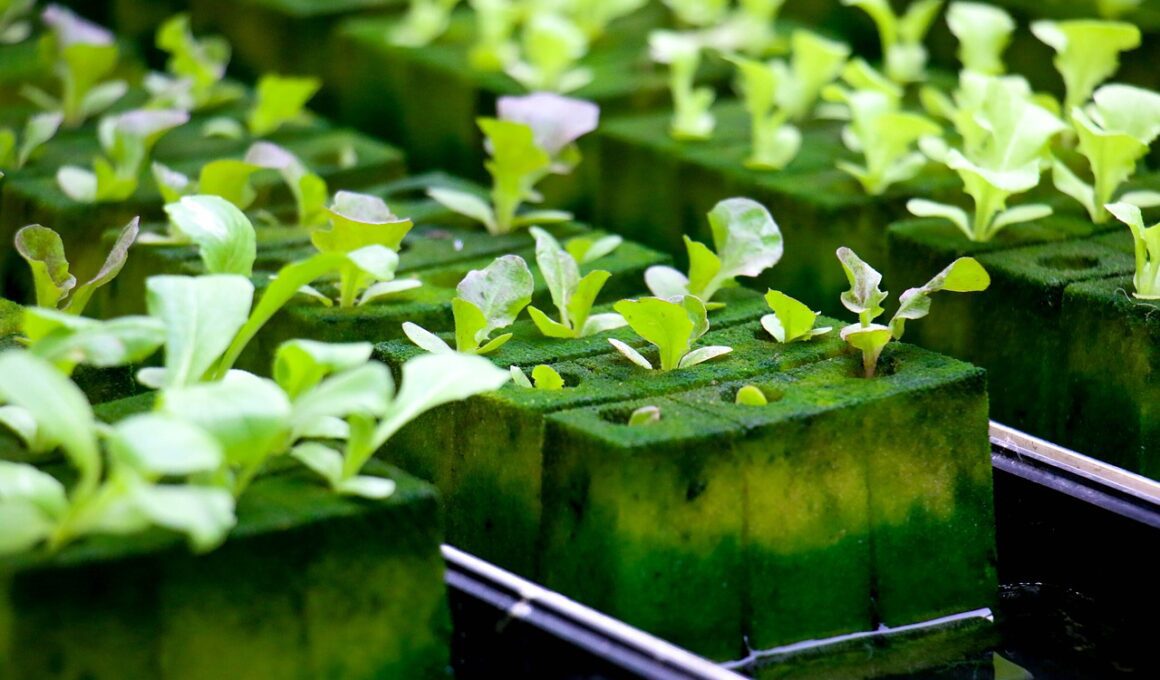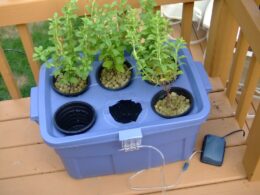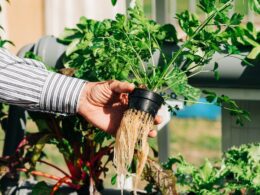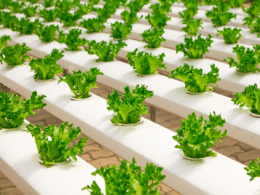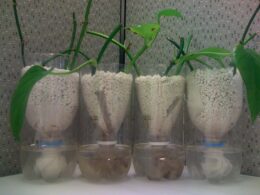Are you concerned about the safety of the food you eat? Have you heard about hydroponic lettuce and wondered if it is safe to consume?
Hydroponics is a method of growing plants without soil, using nutrient-rich water instead. With the increasing demand for fresh produce, hydroponic farming has become more popular in recent years.
But what does this mean for the safety of the lettuce you consume? In this article, we will explore the safety of hydroponic lettuce and provide you with the information you need to make an informed decision.
We will explain the hydroponic farming process, food safety regulations and guidelines, and compare hydroponic lettuce to traditional lettuce. We will also address common concerns about hydroponic lettuce and provide you with the knowledge you need to confidently decide if hydroponic lettuce is safe for you and your family to eat.
Understand the Hydroponic Farming Process
It’s important to understand the process of how hydroponic farming works before deciding to consume the lettuce.
Hydroponic farming is a type of vertical farming that involves growing plants without soil. Instead, plants are grown in water-based nutrient solutions. The roots of the plants are suspended in the solution, and they absorb the necessary nutrients directly from it.
The nutrient solutions used in hydroponic farming are carefully monitored and controlled to ensure that the plants receive the right amount of nutrients they need. This allows the plants to grow faster and produce more yield than traditional farming methods.
The conditions in which the plants are grown are also carefully monitored, such as temperature and humidity levels, to ensure optimal growth.
Overall, hydroponic farming is a safe and efficient way to grow lettuce. The controlled environment allows for minimal use of pesticides and herbicides, reducing the risk of contamination. Additionally, the nutrient solutions used are carefully monitored and free from harmful chemicals.
So, you can rest easy knowing that the hydroponic lettuce you consume is not only safe but also nutritious and delicious.
Food Safety Regulations and Guidelines
If you’re concerned about the safety of your fresh produce, it’s important to understand the food safety regulations and guidelines in place. In the case of hydroponic lettuce, growers are subject to the same regulations as traditional soil-based farms. This includes the Food Safety Modernization Act (FSMA), which sets forth guidelines for preventing contamination throughout the entire growing process.
One key aspect of food safety in hydroponic farming is traceability. This means that growers must be able to track their produce from seed to harvest, and even beyond to distribution. By maintaining detailed records, growers can quickly identify the source of any contamination and take action to prevent it from happening again.
Additionally, many hydroponic farms seek out organic certification, which requires even stricter adherence to food safety guidelines.
In summary, hydroponic lettuce is subject to the same food safety regulations and guidelines as traditional soil-based farms. Growers must maintain traceability and adhere to strict guidelines in order to prevent contamination and ensure the safety of their produce. By understanding these regulations and seeking out organic certification, hydroponic farmers can offer consumers a safe and healthy food option.
Comparing Hydroponic Lettuce to Traditional Lettuce
When you compare traditional and hydroponic farming methods for producing lettuce, you’ll see that there are some key differences that may impact your overall experience as a consumer.
One of the main differences is in the nutritional value of the lettuce. Hydroponic lettuce is grown in a controlled environment, with carefully monitored nutrient levels, which can result in a higher nutrient content than traditional lettuce. Additionally, hydroponic lettuce is typically harvested closer to its peak ripeness, which means it may have a higher nutrient density than traditional lettuce.
Another key difference between hydroponic and traditional lettuce is in the taste. Many people report that hydroponic lettuce has a crisper, fresher taste than traditional lettuce. This may be due to the fact that hydroponic lettuce is grown in a soil-free environment, which can result in less exposure to pests and disease. Additionally, hydroponic lettuce is often grown in a nutrient-rich solution, which can enhance its flavor.
Overall, when it comes to comparing hydroponic and traditional lettuce, there are some clear differences in both nutritional value and taste. While traditional lettuce is still a healthy and nutritious option, hydroponic lettuce may offer some added benefits. So whether you’re looking for a nutrient-packed salad or simply want to enjoy a crisp, fresh taste, hydroponic lettuce is definitely worth considering.
Is Hydroponic Lettuce a Safe Option for Consumption?
Hydroponic lettuce is indeed a safe option for consumption, as hydroponics safety concerns are adequately addressed. With this soilless cultivation method, plants grow in a controlled environment, minimizing exposure to pests, pesticides, and soil-borne diseases. Hydroponic systems allow for precise nutrition and water management, ensuring healthier and more hygienic produce.
Common Concerns about Hydroponic Lettuce
When consuming hydroponic lettuce, you may be concerned about the use of pesticides.
Additionally, bacterial contamination is another potential issue to keep in mind.
However, it’s important to note that these concerns can be addressed through proper growing and handling practices.
Pesticide Use
Using pesticides on crops is a common practice in traditional farming methods, but it raises concerns about the safety and health effects on consumers. Pesticides are often used to control insects, weeds, and diseases that can damage crops. However, the use of pesticides can have harmful effects on the environment and can even lead to pesticide residues on the produce.
Hydroponic lettuce, on the other hand, eliminates the need for pesticides altogether. Instead, hydroponic growers use alternative methods like integrated pest management (IPM) to prevent and control pests. This method uses natural predators, beneficial insects, and other non-toxic products to keep pests at bay.
As a result, hydroponic lettuce is not only safer for consumption, but it is also better for the environment.
Bacterial Contamination
Now that we’ve discussed the use of pesticides in hydroponic lettuce, let’s talk about another potential concern: bacterial contamination.
While hydroponic systems are designed to minimize the risk of contamination, it is still possible for harmful bacteria to grow in the nutrient-rich water used to grow the lettuce. This can lead to illnesses such as E. coli and salmonella if the lettuce is not properly washed or cooked before consumption.
However, there are prevention measures in place to ensure that hydroponic lettuce is safe to eat. Many hydroponic farms use strict sanitation protocols and regularly test their water and lettuce for bacteria. Additionally, hydroponic lettuce is often grown in a controlled environment, which reduces the risk of contamination from animals or other environmental factors.
It’s also important to note that hydroponic lettuce has been found to have many health benefits, including higher levels of vitamins and minerals compared to traditionally grown lettuce. As long as you take proper precautions such as washing and cooking the lettuce, there’s no need to worry about bacterial contamination in hydroponic lettuce.
Making an Informed Decision
When it comes to making an informed decision about buying and preparing hydroponic lettuce, it’s important to conduct a personal risk assessment. This means taking into account any health concerns or sensitivities you may have, and researching the specific methods used by the growers.
When purchasing and handling hydroponic lettuce, always follow safe food handling practices to reduce the risk of contamination and ensure a safe, healthy meal.
Personal Risk Assessment
You need to consider your own health and well-being before indulging in this modern form of gardening. While hydroponic lettuce may have many benefits, it’s important to assess your personal risk factors before consuming it. Here are some points to consider:
-
If you have a weakened immune system due to a medical condition or medication, you may be at a higher risk of foodborne illness. It’s important to consult with your healthcare provider before consuming hydroponic lettuce.
-
If you have allergies to certain types of lettuce or other foods, it’s important to check the labels and ask the grower about the specific type of lettuce being grown.
-
While hydroponic gardening can reduce the risk of soil-borne contamination, it’s still important to practice good hygiene when handling and preparing the lettuce.
-
It’s important to research the grower and their practices before purchasing hydroponic lettuce. Look for certifications and reviews to ensure that the grower is reputable and follows safe growing practices.
By considering these factors, you can make an informed decision about whether or not hydroponic lettuce is safe for you to consume. Always prioritize your health and well-being when making food choices.
Buying and Preparing Hydroponic Lettuce
Get your hands on some fresh and delicious hydroponic lettuce by following these simple steps for buying and preparing this modern form of gardening.
When you’re buying hydroponic lettuce, look for crisp, green leaves with no browning or wilting. Be sure to check the label for the growing method and the date it was harvested.
Hydroponic lettuce can be stored in the refrigerator for up to a week, but it’s best to eat it as soon as possible to get the most nutritional value.
When preparing hydroponic lettuce, rinse it thoroughly in cold water to remove any dirt or debris. Pat it dry with a clean towel or use a salad spinner to remove excess water.
Hydroponic lettuce is packed with nutrients, including vitamins A and C, iron, and calcium, making it a healthy and delicious addition to any meal.
So, add some hydroponic lettuce to your next salad or sandwich and enjoy the fresh and tasty benefits of this modern form of gardening.
Frequently Asked Questions
How long does hydroponic lettuce last compared to traditional lettuce?
When it comes to comparing the shelf life of hydroponic lettuce versus traditional lettuce, there are some key differences to keep in mind. The good news is that hydroponic lettuce can often last longer than traditional lettuce if stored properly.
This is because hydroponic lettuce is typically grown in a controlled environment with minimal exposure to pests and disease, which can help to extend its shelf life. To get the most out of your hydroponic lettuce, it’s important to store it properly in the fridge and avoid any exposure to moisture or direct sunlight.
By following these simple storage techniques, you can enjoy fresh and tasty hydroponic lettuce for much longer than traditional lettuce.
Can hydroponic lettuce be grown without the use of pesticides?
Looking for a way to enjoy fresh, pesticide-free lettuce that’s grown in an organic environment? Look no further than organic hydroponic lettuce!
This type of lettuce is grown without the use of harmful pesticides, making it a safe and healthy choice for you and your family. By harnessing the power of hydroponics, growers can create a controlled environment that is free from pests and other contaminants, allowing the lettuce to thrive without the need for harmful chemicals.
So if you’re looking for a safe and delicious way to enjoy fresh lettuce, consider giving organic hydroponic lettuce a try!
What are the environmental impacts of hydroponic farming?
If you’re interested in the environmental impacts of hydroponic farming, you’ll be happy to know that many hydroponic farms prioritize sustainability practices.
By growing plants without soil, hydroponic farming can use up to 90% less water than traditional farming methods.
Additionally, many hydroponic farms use renewable energy sources like solar power to decrease their carbon footprint.
While there may be some concerns about the energy usage of indoor hydroponic farms, the sustainability benefits of hydroponic farming make it a promising option for the future of agriculture.
Can hydroponic lettuce be contaminated with bacteria such as E. coli?
Hydroponic lettuce safety is a concern for many people, especially when it comes to bacterial contamination. While hydroponic farming can be a safe and efficient way to grow produce, there is still a risk of contamination from bacteria like E. coli.
It’s important to ensure that proper hygiene and sanitation practices are followed in hydroponic farms to minimize the risk of bacterial contamination. Additionally, consumers should always wash their lettuce thoroughly before consuming it to further reduce the risk of any bacteria present.
Overall, while hydroponic lettuce can be safe to eat, it’s important to take precautions to ensure that it’s free from harmful bacteria.
Are there any differences in the nutritional content of hydroponic lettuce compared to traditional lettuce?
When it comes to comparing hydroponic and traditional lettuce, there are some differences in the nutrients and taste. Hydroponic lettuce tends to have higher levels of vitamins and minerals because they’re grown in a controlled environment with precise nutrient solutions.
Traditional lettuce, on the other hand, can vary in nutrient content depending on the quality of the soil it was grown in. Taste-wise, hydroponic lettuce is often described as crisper and sweeter than traditional lettuce.
However, it’s important to note that both types of lettuce are generally safe to eat as long as they’re properly handled and washed before consumption.
Conclusion
So, is hydroponic lettuce safe to eat? The answer is a resounding yes. Thanks to strict food safety regulations and guidelines, hydroponic lettuce is just as safe, if not safer, than traditional field-grown lettuce.
In fact, hydroponic farming allows for greater control over the growing environment, reducing the risk of contamination from external factors such as pests and diseases. While there may be some common concerns about the use of chemicals and the lack of soil in hydroponic farming, these concerns are largely unfounded.
In truth, hydroponic lettuce is often grown using natural fertilizers and pest control methods, and the lack of soil actually reduces the risk of soil-borne pathogens. So go ahead, enjoy your hydroponic lettuce with confidence knowing that it is a safe and healthy option for you and your family.





